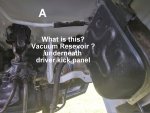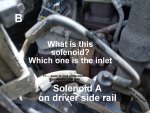BigSkyBrad
Active member
@OzWanderer I got mine working again. The solenoids were really crusty so needed replacing anyway, but the price from Mitsi for the solenoid pack was silly money. So I made my own using a £13 pattern solenoid pack for a Mitsi L200 and £10 of silicon vacuum line. It has 6.5mm blades that take a standard crimp terminal and I potted the plug receptor with sealant. That bodged bottle on yours is replacing a small tubular buffering 'tank' that has a rubber grommet (as a bellow) at each end, that I can only guess is a just a way of making the solenoids water-tight without restricting the piston movement. As each solenoid energises it displaces air out of it's case, and when de-energises it needs to suck it back in. For now, I've just using the breathing end caps that came with the new solenoids. If the actuator engages the transfer case in 2wd, simply swap over the vacuum hoses at the actuator. I've also mounted the solenoid pack next to the actuator instead of up in the chassis so that can keep an eye on it, and for quick replacement if need be. I may even carry one as a spare as they are small and cost peanuts.
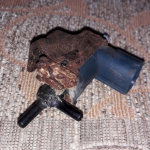

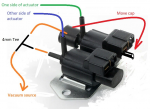
Probably not to most folk's standard, but here's what I've done...
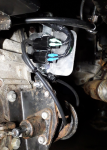
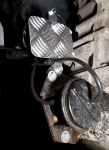



Probably not to most folk's standard, but here's what I've done...



